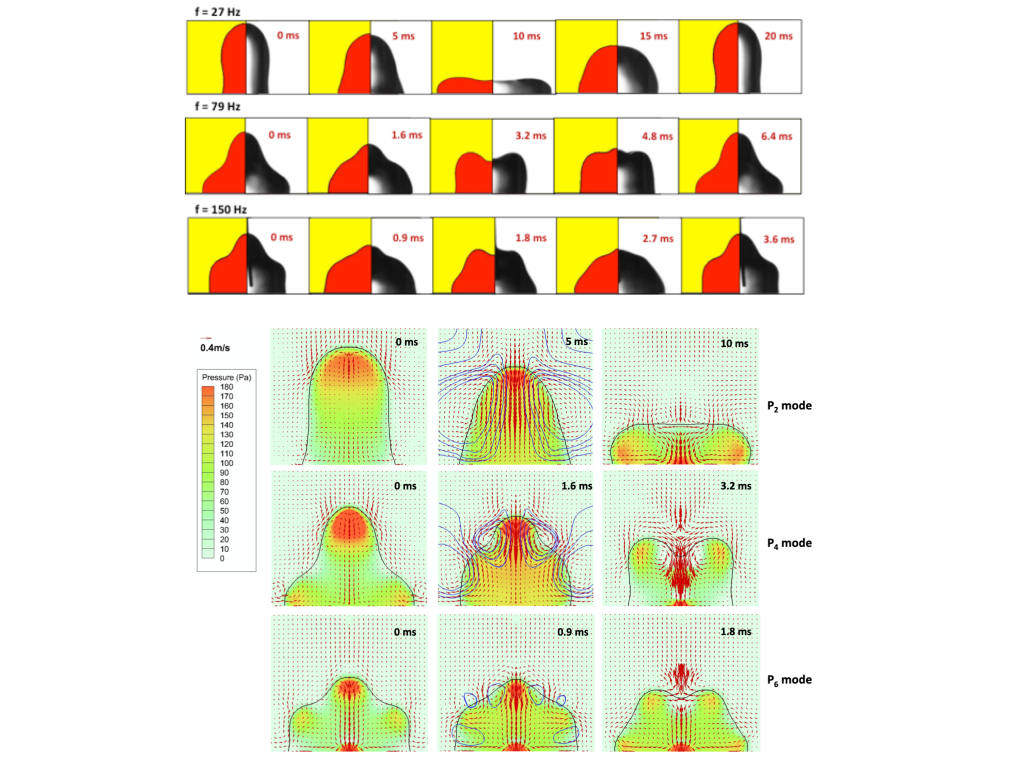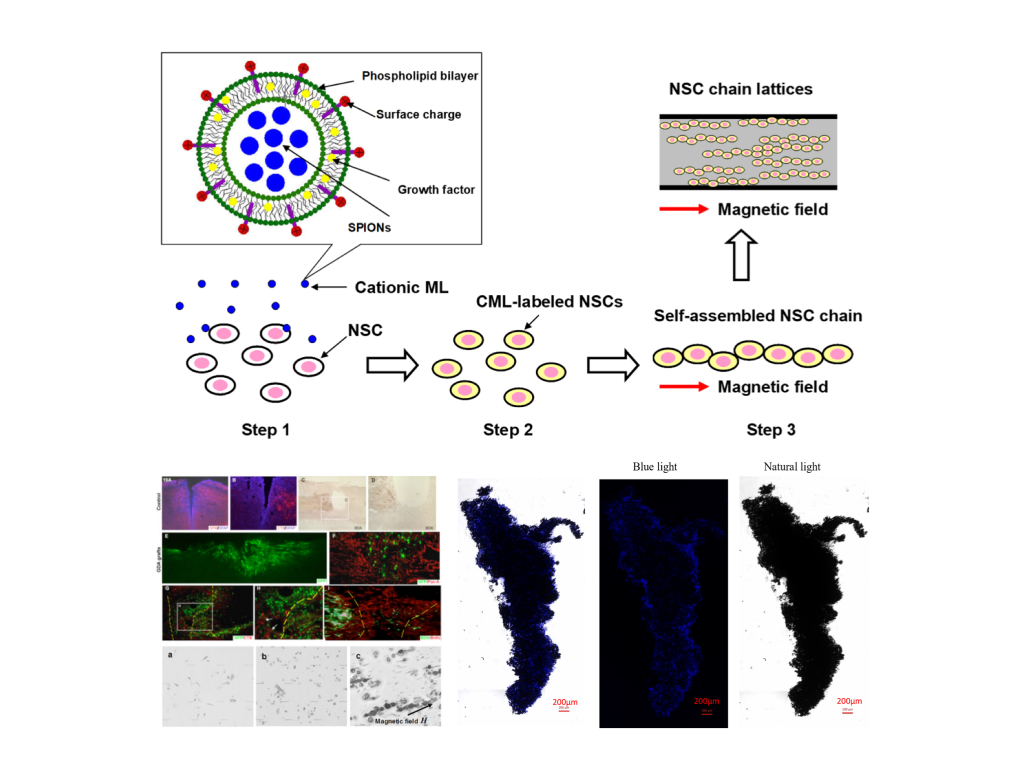Research
Tunable adaptive nucleate boiling heat transfer surfaces with electrowetting
Thermal energy transport is a critical aspect of power generation and energy transmission, and significant advances will be made in increasing the efficiency of various energy systems if nucleate boiling can be better controlled and improved. This research aims at exploring a new venue to enhance nucleate boiling heat transfer by creating tunable adaptive boiling surfaces with the aid of electrowetting (EW). It capitalizes on the complimentary roles of hydrophobicity and hydrophilicity played in nucleate boiling, and takes advantage of the ability of electrowetting to alter the surface wettability reversibly and robustly. With this approach, the engineered boiling surface remains hydrophobic at low-to-moderate heat fluxes without the electric field on, so that onset of nucleate boiling commences spontaneously and excellent boiling heat transfer can be obtained. When the dryout-causing bubble growth and merger intensify at high fluxes, electrowetting will be activated to change the surface to hydrophilic, thereby keeping the surface rewetted and delaying the critical heat flux (CHF). Moreover, alternating current-driven electrowetting (ACEW) can be used to stimulate time-harmonic bubble shape oscillations that generate strong streaming flows in the surrounding liquid. The streaming convection will superimpose with natural convection and bubble ebullition-induced microconvection in further augmenting nucleate boiling heat transfer. The overriding objectives of this research are to elucidate the effects of electrowetting-modulated reversible surface wetting on nucleate boiling as well as to demonstrate the efficient and low-cost manufacturing of such tunable adaptive boiling heat transfer surfaces.



Dynamics of electrowetting-induced droplet motio
Electrowetting (EW) has drawn significant interests due to the potential applications in electronic displays, lab-on-a-chip microfluidic devices and electro-optical switches, etc. However, current understanding of EW is hindered by the inadequacy of available numerical and theoretical methods in properly modeling the transient behaviors of EW-actuated droplets. In this work, a combined numerical and experimental approach was employed to study the EW response of a droplet subject to both direct current (DC) and alternating current (AC) actuating signals. Computational fluid dynamics models were developed by using the Volume of Fluid (VOF)-Continuous Surface Force (CSF) method. A dynamic contact angle model based on the molecular kinetic theory was implemented as the boundary condition at the moving contact line, which considers the effects of the contact line friction and the pinning force. The droplet shape evolution under DC condition and the interfacial resonance oscillation under AC condition were investigated. It was found that the numerical models were able to accurately predict the key parameters of electrowetting-induced droplet dynamics.
Dielectrophoresis-directed assembly of micro/nanostructures
Dielectrophoresis (DEP)-based fluidic self-assembly of nanoscale building blocks, such as nanoparticles and nanowires, is a promising alternative to the current micro/nanofabrication techniques to manufacture functional micro/nanodevices. While individual particles can be manipulated with reasonable precision, it remains a grand challenge to scale up the assembly process to reproducibly assemble a large number of particles. This is partially due to the lack of a quantitative understanding of the complex fluid-particle dynamics when numerous nanostructures are interacting both electrically and hydrodynamically. In this work, both experiment and numerical study were conducted to explore the electrohydrodynamic effects during the assembly of multiple nanostructures driven by DEP.
Direct numerical simulations were conducted that combine the Maxwell Stress Tensor (MST) approach and the Distributed Lagrange Multiplier/Fictitious Domain (DLM/FD) method to solve the conjugate fluid-particle interaction problem. The MST approach was used to compute the DEP forces and torques exerted on the particles, which yields rigorous solutions even for highly non-uniform electric field and for particles of irregular shapes. The DLM/FD method was then employed to simulate the hydrodynamic equations of the particle-fluid system involving multiple particles. The motion of the individual particles and the subsequent aggregation of adjacent particles under three major driving mechanisms for directed self-assembly, namely, DEP, traveling-wave DEP and electrorotation, were studied in details. In addition, microfluidic DEP devices were fabricated and self-assembly experiments were carried out for polystyrene microparticles suspended in colloidal solutions. The observed particle motion and the assembly patterns were compared to the numerical simulation results. The good agreement suggests the comprehensive numerical framework developed in this work can be used as a powerful tool for the fundamental study of colloidal hydrodynamics with coupled electrokinetic effects.


Virtual scaffolds for spinal cord injury repairing using magnetically labeled neural stem cells
This research aims at developing a novel technique to fabricate injectable, alignable, and bioactive scaffold that uses neural stem cells (NSCs) as building blocks for spinal cord injury (SCI) repair. This work capitalizes on the ability to manipulate superparamagnetic iron oxide nanoparticles (SPIONs) with magnetic field remotely and noninvasively. In this approach, the NSCs are labeled with nanoengineered cationic magnetoliposomes (CMLs) which encapsulate numerous SPIONs, and can be injected into the injured spinal cord in colloidal suspensions. Upon the application of a magnetic field, magnetically labeled NSCs will spontaneously self-assemble into chain/column lattices and align along a virtual axis defined by the field flux lines, thereby forming a scaffold to guide the directional regrowth of axons. Neurotrophic factors stored in the bilayer of the CMLs can be released by radio frequency electromagnetic triggering to promote NSC survival and axonal growth. The overriding objective of this research is to demonstrate in vivo magnetic directed self-assembly of NSCs into highly aligned chain/column lattices for nerve regeneration after SCI, which are capable of guiding the directional growth of axons and creating a regeneration-promoting environment.